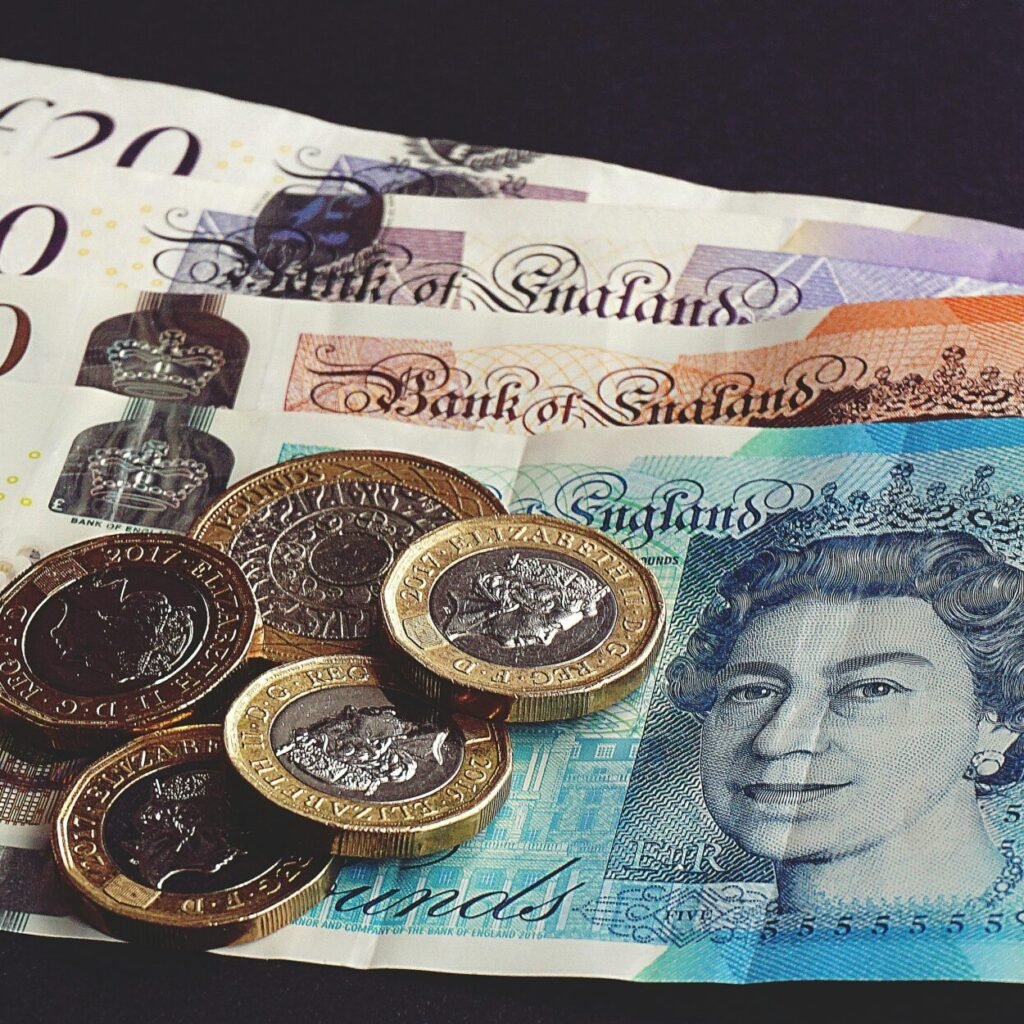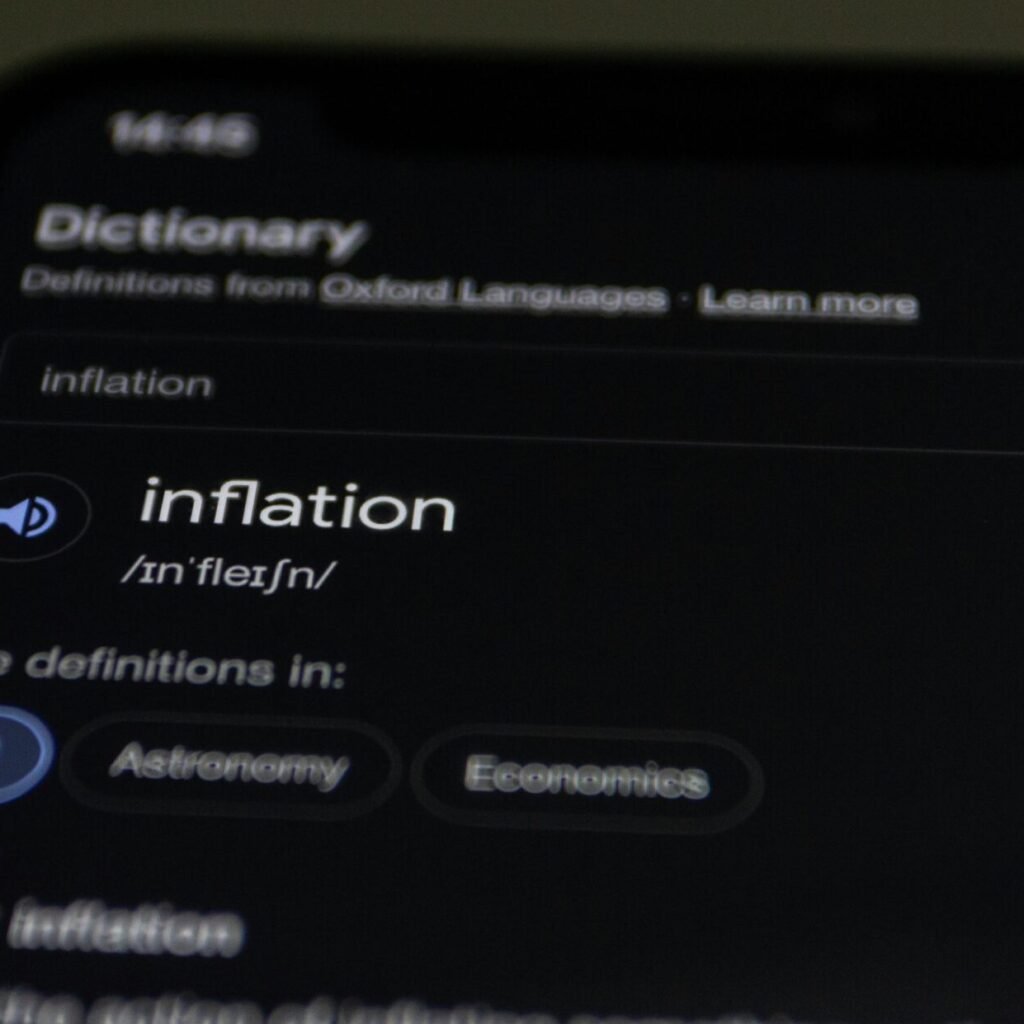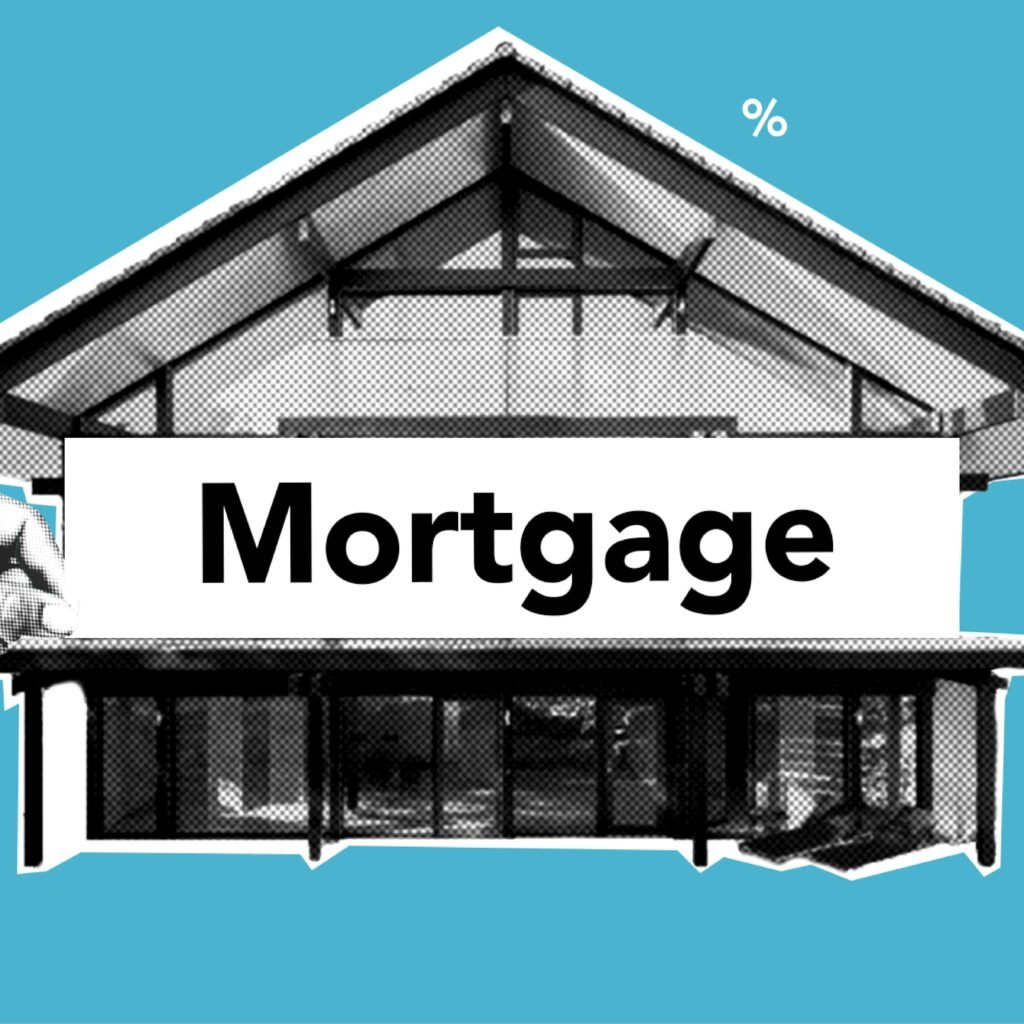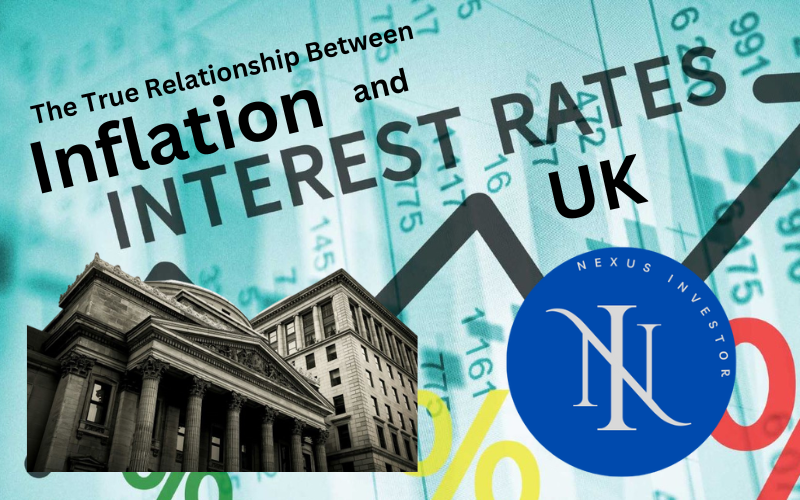Understanding the relationship between inflation and interest rates is crucial. It’s a key aspect of economic literacy.
Inflation and interest rates – if they were a couple, their relationship status would be “It’s complicated.” These two economic factors play a significant role in our daily lives, influencing everything from the cost of borrowing to the price of goods and services.

This article, brought to you by Nexus Investor, aims to shed light on the intricate relationship between these two elements. We’ll delve into how they affect each other and the broader economy.
We’ll explore how central banks use interest rates to control inflation, ensuring that our financial system stays balanced. We’ll also clarify concepts like APY and nominal interest rates, the jargon that often leaves us scratching our heads. Additionally, we’ll discuss strategies like compound interest to boost your savings and why this is crucial in your long term investing.
Whether you’re an investor, a student of economics, or simply someone looking to deepen your understanding of economic mechanisms, this article is for you. Join us as we navigate the fascinating relationship between inflation and interest rates.
Table of Contents
Understanding Interest Rates
Interest rates play a pivotal role in the economy. They are essentially the cost of borrowing money. To put it simply, if money were a pizza, the interest rate would be the extra slice you owe for the privilege of enjoying it now rather than later.
When you take out a loan, the interest rate is the percentage of the loan amount that you’ll pay back in addition to the principal. For example, if you borrow £1,000 at an interest rate of 5%, you’ll pay back £1,050. Conversely, when you deposit money in a savings account, the interest rate is the percentage of your deposit that the bank pays you for the privilege of using your money. If you deposit £1,000 at an interest rate of 2%, you’ll earn £20 over the year.

Understanding interest rates is key to making informed financial decisions. This is particularly true when considering the relationship between inflation and interest rates. The Central Bank and its monetary policy decisions significantly influence these rates to maintain economic stability.
Inflation Explained
Inflation is the rate at which the general level of prices for goods and services is rising. As inflation increases, every pound you own buys a smaller percentage of a good or service.

The value of a pound does not stay constant when there is inflation. Instead, it is observed in terms of purchasing power, which is the real, tangible goods that money can buy. When inflation goes up, there is a decline in the purchasing power of money, meaning the consumer would be able to buy less with the same amount of money.
There are various different types of inflation which we will now briefly look at which helps explain the reasons behind why inflation occurs.
Demand-Pull Inflation occurs when the demand for goods and services exceeds supply, causing prices to rise. This can happen due to increased consumer spending, government expenditure, or investment.
Cost-Push Inflation happens when the costs of production increase, leading businesses to raise prices to maintain profit margins. Common causes include higher wages, increased prices for raw materials, and supply chain disruptions.
Built-In Inflation results from a feedback loop where workers demand higher wages to keep up with rising living costs, and businesses increase prices to cover the higher wage costs, leading to a wage price spiral.
Each type of inflation reflects different underlying economic pressures, affecting how policymakers might respond to stabilise the economy.
Two additional components that have also been added to the mix are Quantitative Easing (QE) and Currency Debasement, which have significantly affected inflation. QE, implemented by central banks like the Bank of England, involves purchasing financial assets to inject money into the economy. This increases the money supply, which can lead to higher inflation if the supply of goods and services doesn’t keep pace. As more money chases the same amount of goods, prices rise, contributing to inflation.
Currency debasement, resulting from increased money supply through QE, lowers the currency’s value, effectively via dilution. This makes imports more expensive, further driving inflation. These are fairly complex and controversial topics, so we will move on for now, but in a future article, the team at Nexus Investor will look more closely into the the intricate relationship between currency debasement, QE, and their impacts on inflation.
Dramatic Global Events and Their Inflationary Impact
During the COVID-19 pandemic, inflation rose primarily due to supply-side (cost-push) inflation. This occurred as a result of several factors:
- Supply Chain Disruptions: Lockdowns and restrictions led to bottlenecks in production and distribution, reducing the supply of goods. For example, the global semiconductor shortage affected numerous industries, leading to higher production costs and, consequently, higher prices for consumer goods.
- Increased Production Costs: The cost of raw materials and shipping surged during the pandemic. With fewer workers available and increased health and safety measures, production costs went up, pushing businesses to raise prices.
- Labour Shortages: The pandemic caused significant labour shortages as many workers fell ill, quarantined, or left the workforce due to health concerns or caregiving responsibilities. This increased labour costs as companies had to offer higher wages to attract and retain employees.
While there was also some element of demand-pull inflation as economies reopened and consumer demand surged, the primary driver during the pandemic was cost-push inflation due to the significant disruptions in supply chains and increased costs of production.
The war in Ukraine has also significantly impacted global inflation by driving up energy and food prices and disrupting supply chains. Energy prices soared due to disrupted supplies and sanctions on Russia, a major exporter of oil and natural gas, leading to higher costs worldwide. Additionally, Ukraine and Russia’s roles as major grain exporters meant that the conflict disrupted agricultural exports, reducing global supply and causing food prices to spike.
Supply chain disruptions have further increased production costs and delays, contributing to rising prices for goods. Moreover, the geopolitical uncertainty and market volatility have heightened inflation expectations, leading businesses to raise prices. Together, these factors have driven up inflation globally, making everyday goods and services more expensive.
The Inverse Relationship between Inflation and Interest Rates
There is an inverse relationship between inflation and interest rates. Central banks such as the Bank of England (BOE) or the Federal Reserve (FED) in the US, play a pivotal role in managing inflation and interest rates. They use monetary policy tools, primarily interest rates, to control inflation and stabilise the economy. By adjusting the interest rate, central banks can influence borrowing costs, investment, and spending. When inflation rises, central banks respond by increasing interest rates to slow economic growth and control inflation. This is because higher interest rates mean higher borrowing costs, which can reduce spending and investment.
On the other hand, during periods of low inflation or in economic downturns, central banks may lower interest rates to stimulate economic growth. Lower interest rates make borrowing cheaper, encouraging spending and investment, thereby boosting economic growth. Understanding this inverse relationship is crucial for both investors and policymakers.
Nominal vs Real Interest Rates
The nominal interest rate is the rate of interest before taking inflation into account. It’s the rate that you see advertised by banks and lending institutions. However, the nominal rate doesn’t provide a complete picture of the actual cost or return on an investment.
The real interest rate, on the other hand, factors in inflation. It’s calculated by subtracting the inflation rate from the nominal interest rate. The real interest rate gives a more accurate representation of the true cost of borrowing or the real return on an investment, as it reflects the purchasing power of the money.

A lot of people look at things like house prices for example, and think they have appreciated in value so much over the years. A house in London in the mid 1980’s might of cost about £40,000, and is now worth around £600,000. This amounts to an increase of £560,000, or a 1400% gain, increasing in value by 15 times, and this equates to roughly 7% per year compounded increase based on 40 years (1984-2024).
Using an inflation calculator at Hargreaves Lansdown, and based on assumptions of inflation rates from the Office for National Statistics, £40,000 in 1984, would be worth the same purchasing power of about £176,000 today. Your £ 40,000 would need to have grown by an average of 3.8% per year, just to have kept pace with inflation.
If you achieved a lower rate of growth, the real value of your money would have fallen. We observe that the difference between the nominal increase of 7% and the inflation rate of 3.8% is 3.2%, which represents the average real compound rate of the price rise of this UK property over the last 40 years. This example highlights that inflation was the primary driver of the house price increase in this period.

It is extremely important to be mindful that the real interest rate needs to be above zero to make real gains to your wealth. If you are getting a negative real interest rate, then your wealth is losing value. Anyone leaving that £40,000 in the bank gaining 2% on average over the last 40 years would now have about £88,000, and they may be pleased that their money has gone up over the years. However, the reality is that they would have lost around 50% of their purchasing power. Additionally, not only has the purchasing power dropped by 50%, the value of scarce assets such as property has gained value in that time.
A simple way to think about this and to work it out is to base the value of £40,000 in todays value turns of purchasing power which is about £176,000 and then work out how much this has increased per year to get to the current value of the £600,000 house, which is an annual compounded increase of just under the 3.2% rate we had previously worked out. So it is clear to see just by increasing the compound interest rate from 2%, which is well under the break even point of 3.8% to around 7% can have drastically positive consequences to your finances.
APY vs Interest Rate: What’s the Difference?
The Annual Percentage Yield (APY) and the interest rate are both used to calculate the potential earnings from an investment or the cost of a loan. However, they are not the same. The interest rate is the cost of borrowing money or the return on an investment, expressed as a percentage of the principal amount.
On the other hand, APY takes into account the effect of compounding interest, as we have discussed above in the house price example. It represents the total amount of interest that will be earned or paid over a year, assuming the interest is left to compound. Therefore, APY provides a more accurate measure of the total return or cost. An example of this would be a savings account which paid monthly interest to the saver.

Let’s illustrate how compounding increases the interest rate above the simple interest rate with a brief example. Suppose a saver invests £1,000 at a simple interest rate of 5% with monthly compounding for 1 year. Here are the steps to calculate the Annual Percentage Yield (APY):
- Monthly Interest Rate:
- Annual Interest Rate = 5% or 0.05
- Monthly Interest Rate = Annual Rate / 12 = 0.05 / 12 = 0.004167
- Formula for APY:
- APY = (1 + r/n)^(n) – 1
- Where:
- r = annual nominal interest rate (0.05)
- n = number of compounding periods per year (12 for monthly)
- ^ is indicating to the power of
- Calculate APY:
- APY = (1 + 0.05/12)^(12) – 1
- APY = (1 + 0.004167)^(12) – 1
- APY = (1.004167)^(12) – 1
- APY ≈ 1.0512 – 1
- APY ≈ 0.0512 or 5.12%
Interest Earned
To find out how much interest you would earn over one year with monthly compounding:
- Interest Earned Calculation:
- Future Value (FV) = P * (1 + r/n)^(nt)
- Where:
- P = principal amount (£1,000)
- r = annual nominal interest rate (0.05)
- n = number of compounding periods per year (12)
- t = number of years the money is invested (1)
- FV = 1000 * (1 + 0.05/12)^(12*1)
- FV = 1000 * (1.004167)^(12)
- FV ≈ 1000 * 1.0512
- FV ≈ £1,051.20
So, with monthly compounding at an annual interest rate of 5%, the APY is approximately 5.12%, and the interest earned over one year would be about £51.20. As we can see this contrasts to the simple interest rate of 5%, which would have yielded a return of £1050, with interest earned of £50. APY is important as it highlights the important factor of compound interest.

In terms of mortgages, the opposite of compound interest occurs, which is known as amortization. In an amortizing loan, which is standard for any UK repayment mortgage, you make regular monthly payments that reduce both the principal and interest over time. The loan balance decreases with each payment, and therefore, the amount of interest paid each month decreases as well because it’s calculated on the remaining balance of the mortgage.
If you are interested in investing in UK property, but don’t know the best location, please check out our article: Best Location in UK for Buy to Let: Is it still viable in 2024?
How Compound Interest Can Boost Your Investment Pot
Compounding interest is crucial because it allows your investment to grow at an accelerated rate compared to simple interest. With compounding, you earn interest not only on your initial principal but also on the accumulated interest over time. You are basically earning interest on interest and this leads to exponential growth, significantly enhancing the value of your investment.

The longer your investment compounds, the more substantial the growth, making it essential to start investing early. This principle is a powerful incentive to reinvest earnings rather than spending them, maximising the growth potential of your investment.
Compounding interest also helps beat inflation by preserving and increasing the purchasing power of your money over time. This is particularly important for long-term savings goals, such as retirement funds. By continuously earning interest on interest, investments can grow faster, helping individuals achieve their financial goals more effectively.
Practical Example:
Let’s consider two investors:
- Investor A: Invests £1,000 at an annual interest rate of 5% compounded annually for 20 years.
- Investor B: Invests £1,000 at the same interest rate but uses simple interest.
Investor A:
- Future Value = £1,000 * (1 + 0.05)^20 ≈ £2,653.30
Investor B:
- Future Value = £1,000 + (£1,000 * 0.05 * 20) = £2,000
As shown, Investor A’s investment grows significantly more due to the power of compounding interest. This demonstrates how compounding can substantially enhance the growth of investments, making it a fundamental concept in personal finance and investing.
How High Inflation Affects Savings and Purchasing Power
Inflation erodes the purchasing power of money over time. When inflation is high, the value of money decreases, meaning you can buy less with the same amount of money. This is particularly detrimental for savers, as the real value of their savings diminishes.
Moreover, if the interest rate on savings is lower than the inflation rate, the real return on savings is negative. As we discussed above, this means that the money in your savings account is effectively losing value over time. Therefore, high inflation can discourage savings and encourage spending or investment in assets that potentially yield higher returns. For example, investing in scarce assets such as Property, Gold or even Bitcoin, generally outperforms inflation in the UK over the long term and can provide a substantial return.
The Bank of England’s Role in UK Interest Rates: Relationship Between Inflation and Interest Rates
The Bank of England plays a crucial role in managing UK interest rates. As the country’s central bank, it uses interest rates as a tool to control inflation and stabilise the economy.
As we have previously discussed, The Bank of England can raise or lower the base rate, which is the interest rate at which banks borrow from each other overnight. Changes in this rate can influence other interest rates, including those for mortgages, car loans, and credit cards. Thus, the Bank of England’s decisions can have wide ranging effects on the economy and individual financial decisions.
Over the last 2 years, the BOE has raised interest rates in order to combat inflation, which according to official records peaked at 11.1% in October 2022, which was the highest annual inflation rate in over 40 years. This significant spike in inflation was influenced by various factors, including rising energy prices and supply chain disruptions. Since then, inflation has eased, with the rate decreasing to 4.6% in October 2023 and further down to 3.9% by November 2023, and the latest report is that it is back down to the 2% target at the time of writing, 23rd June 2024.

Relationship Between Inflation and Interest Rates: Conclusion
Why the Relationship Matters and Final Thoughts
Understanding the relationship between inflation and interest rates is crucial for making informed financial decisions. Whether you’re an investor, a business owner, or simply a consumer, being aware of these economic dynamics can help you navigate the financial landscape more effectively and make decisions that align with your financial goals.
Since the financial crisis in 2008, the UK has experienced a prolonged period of low interest rates, with the Bank of England keeping rates near historic lows to stimulate economic recovery and growth. This environment allowed borrowers to obtain mortgages and loans at significantly lower interest rates, making borrowing cheaper and more accessible. As a result, many individuals were able to purchase homes and finance other large expenditures with lower monthly repayments, boosting the housing market and consumer spending.
However, after the 2008 financial crisis, Quantitative Easing was also used to boost the economy, and then events such as Brexit on 3rd July 2016, followed by the Pandemic in 2020, which led to even more liquidity being injected into the system via QE, further debasing the currency, and then the war in Ukraine further compounded the inflationary pressure.
Therefore, over the past couple of years, the Bank of England has begun raising interest rates to combat the rising inflation, with rates reaching 5.25%. This shift has led to higher borrowing costs for new mortgages and loans, increasing monthly repayments and making it more challenging for new buyers to enter the housing market.

Existing homeowners with variable rate mortgages have also seen their repayments rise, potentially straining household budgets, and with the addition of higher energy costs due to the war in Ukraine, and higher food prices, this has all contributed to a severe cost of living crisis in the country. On the flip side, higher interest rates have benefited savers, who are now seeing better returns on their savings accounts and fixed term deposits after years of low yields.
This transition from a low to a higher interest rate environment underscores the delicate balance central banks must maintain between stimulating economic growth and controlling inflation. The impact on borrowers and savers highlights the broader economic consequences of monetary policy adjustments.
With inflation now down to 2%, we anticipate a likely decrease in interest rates. The decision on this will be made at the next Bank of England Monetary Policy Committee (MPC) meeting, scheduled for 1st August 2024, following the general election on 4th July 2024.
It’s important to stay focused and prepare for upcoming rate drops to adapt positively to new market conditions. If you have a high standard variable rate mortgage, consider fixing your rate in the coming months when fixed-rate mortgages are expected to fall. For savers with variable rate or instant access accounts, if you’re willing to tie up your money, it might be worthwhile to look at retail bonds to lock in a higher rate for 1-3 years before rates decline.
So that ties up our article regarding the relationship between inflation and interest rates. At Nexus Investor, we recommend evaluating your current financial situation carefully and be reactive so you can adapt to market conditions accordingly to benefit your portfolio.
As always, conduct your own research, and note that nothing in this article should be considered investment advice. We do not know your individual circumstances, and every investor has a different profile, time horizon, and risk appetite. This information is for educational purposes only. For tailored advice, please consult a financial adviser.










